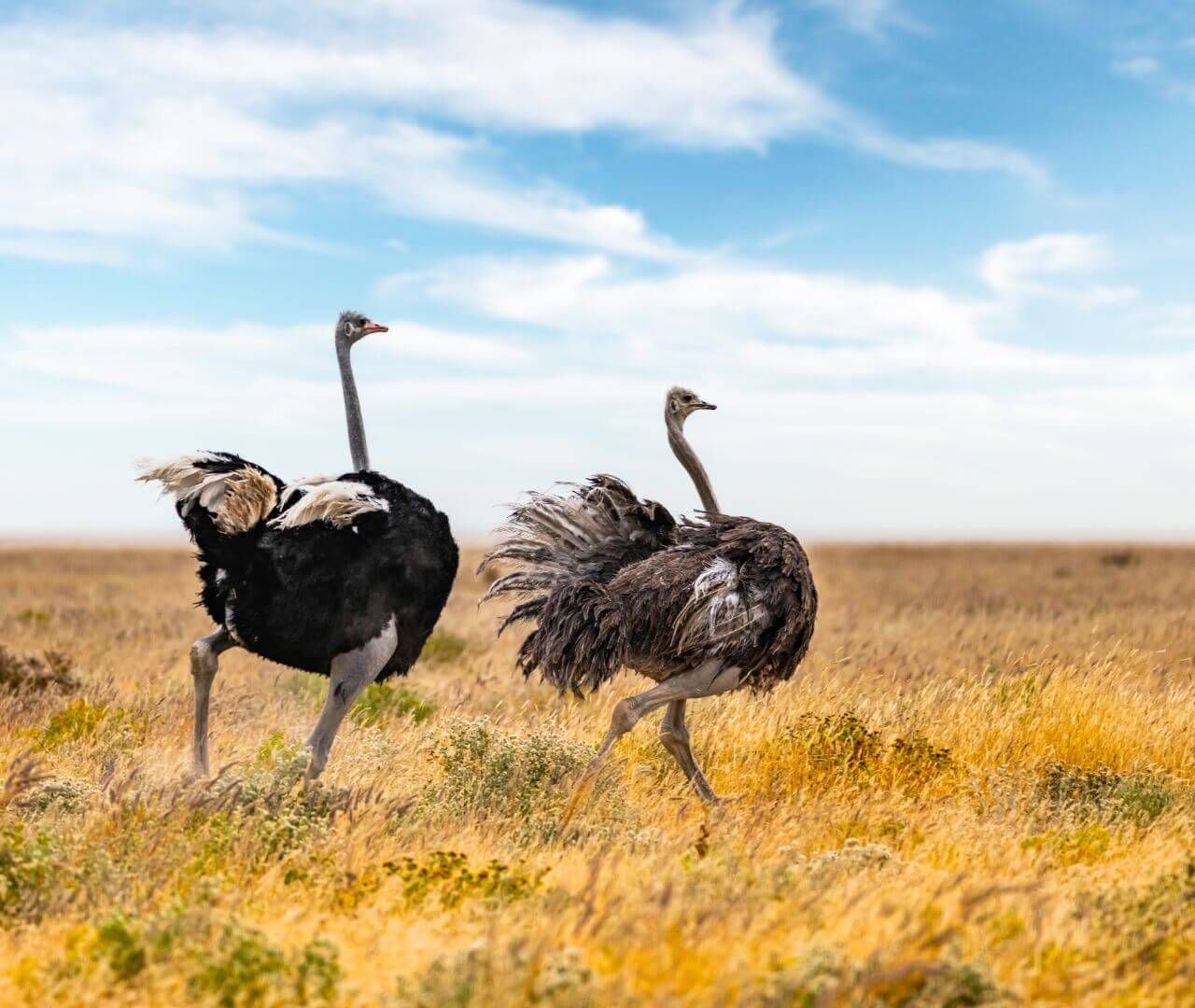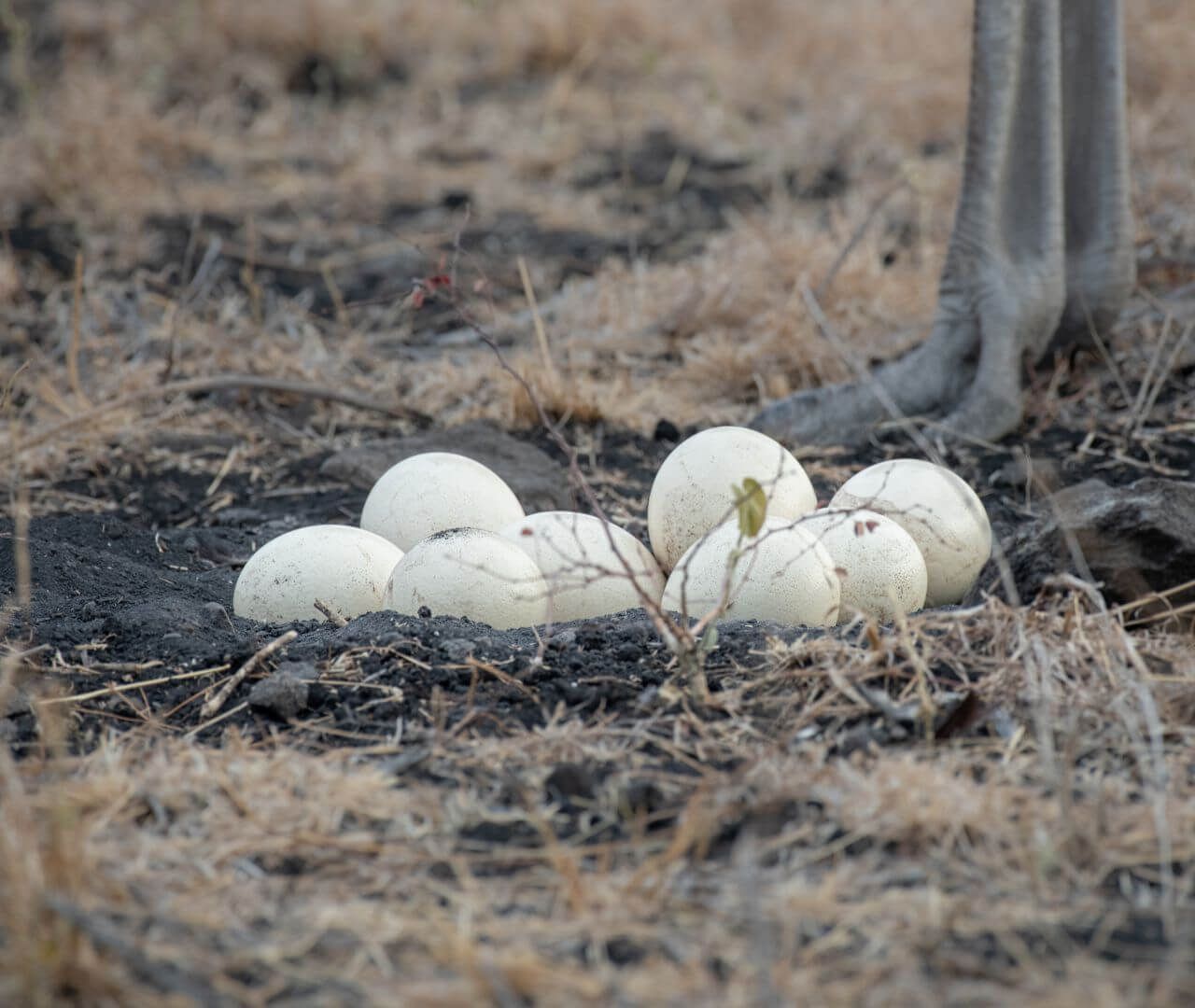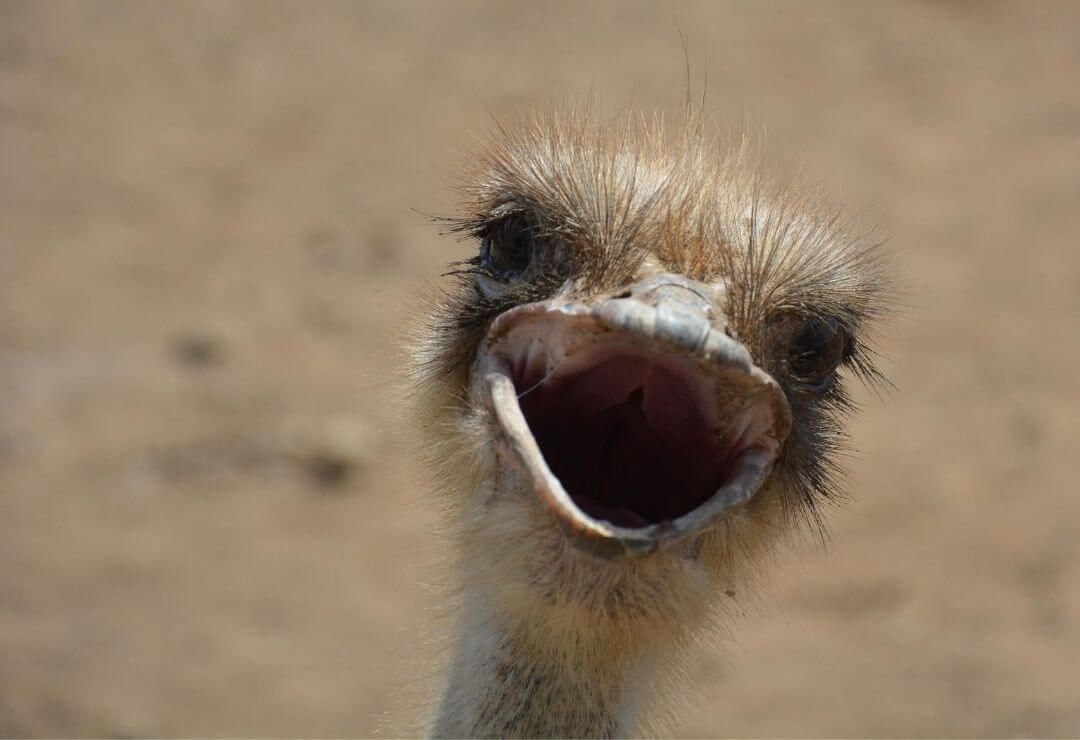Ostriches
Let's Learn About Ostriches
Word of the Week
Ratite
Ratites are a group of birds that includes ostriches, emus, cassowaries, rheas, and kiwis.
Ratites are flightless birds that make their nest on the ground. All ratites have offspring that can run and feed very soon after hatching.
Fast Facts
Where do ostriches live?
Ostriches are native to the dry savannas of Africa.
Common ostriches have a large range throughout central Africa and southern Africa while the Somali ostrich is only found in western Africa. Both species inhabit hot, dry savannas. These open landscapes help them keep an eye out for predators.
What do ostriches eat?
Ostriches are omnivores!
They feed primarily on grasses, seeds, and fruit, but will also eat bugs, lizards, and other small animals. Their wide, flap bill helps them gobble up their food. They can go several days without drinking water but, when available, they drink from and bathe in puddles and ponds.
What traits do ostriches share?
The common ostrich and the Somali ostrich belong to the same genus, meaning they are very closely related and have lots of traits in common!
- They are tall, heavy, flightless birds.
- Their powerful legs make them very fast and give them a strong kick.
- Males and females can be told apart using their feather colors.
- Many females lay their eggs in one nest that is incubated by the dominant male and female.
Do ostriches have any predators?
Yes!
The African savanna is home to many predators that prey on ostriches, such as lions, leopards, African painted dogs, cheetahs, and spotted hyenas. Their eggs and chicks are preyed on by smaller predators like jackals and birds of prey.
Species Spotlight
Common Ostrich
Struthio camelus
The common ostrich is one of two species of ostriches, the other being the less common Somali ostrich. Common ostriches have a large range across the dry savannas of central and southern Africa.
Ostriches are diurnal, meaning they’re active during the day. They can also be active on nights with full moons. Ostriches spend most of the morning and late afternoon feeding on seeds, grasses, fruit, and small animals like bugs and lizards. They frequently feed alongside zebras, wildebeest, and antelope. When resting during the hot parts of the day, they often lay with their neck and head flat on the ground, making them look like a mound of dirt!
Ostriches spend most of the year living alone or in small groups, but they gather in larger groups during the breeding season. Males attract females using unusual dances where they wave their wings and flop their heads back and forth across their backs. Males also make a low, booming sound by inflating their throats.
After breeding, all females in the group lay their eggs in one nest which is cared for by the dominant male and female. Females typically incubate during the day when their brown feathers are well camouflaged. Males typically incubate at night when their black feathers make them hard to see in the darkness. Females have incredibly smart strategies to make sure her eggs stay safe, like keeping her eggs in the center of the nest!
BRAIN BLAST
Ostriches are related to other ratites like emus and cassowaries. Make a list of everything they have in common!
Conservation Corner
Feather Fascination
Ever since the 1700s, ostrich feathers have been very popular. Some cultures thought ostrich feathers represented a god while, in others, wealthy people used them in expensive fans. Ostriches have been hunted for hundreds of years for their feathers, and they're not the only ones.
Beautiful white egrets, majestic eagles, and vibrant flamingos have also been hunted for their feathers. Birds that have unique or brightly colored feathers were often targets. Their feathers were frequently used in fashion, especially on hats. Some species were nearly hunted to extinction before people started to protect them.
In the early 1900s, many countries took action to stop hunting for feathers. Some countries made laws that made it illegal to hunt birds or even have their feathers. Many countries created protected areas for birds where they were safe from hunters. Today, many of these rules are still in place and several species, including ostriches, are now farmed for their feathers (where feathers are collected from living birds rather than killing them!).
Ostrich Obstacles
Determine which traits about ostriches are true and which are false!
Learn More!
Glossary
Adaptation
The process by which a species becomes more fit for its environment over the course of several generations. It is a result of natural selection.
Camouflage
The ability for an organism to blend into its surroundings usually to hide from prey or predators.
Dominant
Used to describe the biggest, strongest, most fit individual in a group.
Incubate
To sit on eggs to keep them warm until hatching.
Omnivore
An animal that eats both meat and plants.
Precocial
Offspring that are well-developed and feed by themselves very soon after birth.
Predator
An animal that hunts other animals for food.
Prey
An animal that is hunted and eaten by another animal.
Ratite
A group of flightless birds consisting of ostriches, emus, cassowaries, rheas, and kiwis.
Savanna
A type of ecosystem dominated by grasses and sparse trees with seasonal rainfall.
Species
A closely related group of animals with similar characteristics that are capable of reproducing (example: tigers).










